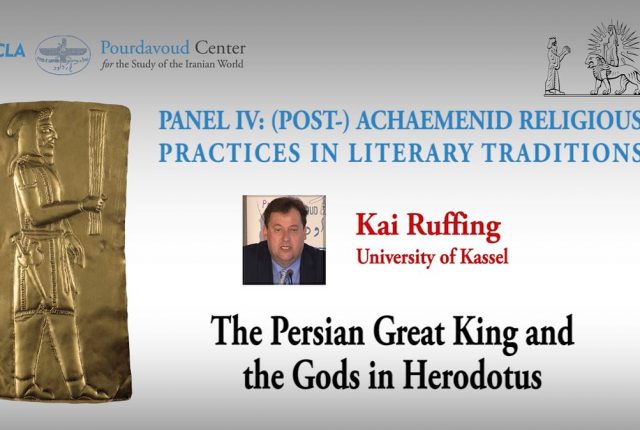
The Persian Great King and the Gods in Herodotus
Recorded: February 19, 2020
Event: Contextualizing Iranian Religions in the Ancient World – 14th Melammu Symposium
by Kai Ruffing (University of Kassel)
Herodotus uses a variety of literary tools to style the Persian kings in several ways, allowing for scholarship to draw a multitude of conclusions regarding the character of these figures. For example, contemporary research has drawn attention to the similarities between the Persian and Spartan kings (E. Millender) or their staging as Sophist Kings (V. L. Provencal). Furthermore, Herodotus played a literary game with Darius’ self-staging as lover of the truth or used the whole repertoire of topoi for describing Cambyses and Xerxes as tyrants. The present paper focuses on how Herodotus used gods and religion for his description and styling of the Persian kings. As will be shown, the intervention of the gods is an important literary tool for the Halicarnassian in his construction of the image of the Persian Great Kings.
Herodotus and the Persian Priests: The Histories as a Source for Iranian Religion
Recorded: February 19, 2020
Event: Contextualizing Iranian Religions in the Ancient World – 14th Melammu Symposium
by Julian Degen (University of Innsbruck)
Herodotus’ Histories is the most important, extant ancient Greek account on Achaemenid history. Persian priests are often mentioned as active agents in the Herodotean world, and thus the Histories seems to be a valuable source in assessing Iranian religions. While Herodotus appears to provide authentic information to his readership, he nonetheless crafted an account that adhered to Greek cultural and intellectual norms, and was colored by his own perspective. By examining the role of Iranian priests within the Histories and collating the Herodotean information with Greek epigraphical sources and cuneiform texts, I will argue that Herodotus’ work, despite its manifest bias, contains authentic information on the state of Persian religion in the Achaemenid empire, which was presented in a Greek discourse on empire and good rulership.
Into the Ashes: Punishment at the Achaemenid Court
Recorded: February 19, 2020
Event: Contextualizing Iranian Religions in the Ancient World – 14th Melammu Symposium
by Daniel Beckman (Princeton University)
In Ctesias’ Persika, written in the early 4th century BCE, a number of elite Persians are sent to their deaths as a result of court intrigues. At least five of these victims are “thrown into the ashes” (εἰς τὴν σποδὸν ἐμβάλλειν). In this lecture, I will examine the possible accuracy of Ctesias’ report, and, if so, establish what the historical and ideological implications for this punishment might be. Given that it would be in obvious violation of the Zoroastrian prohibition against polluting the fire through its exposure to a corpse, the historicity of this reported penance requires some justification. The results of my investigation are fundamentally speculative, but I will present evidence that the application of this punishment was an attempt both to defend the king against rebellion without incurring the risks of an open battle, and also to deflect sin away from the monarch himself.

